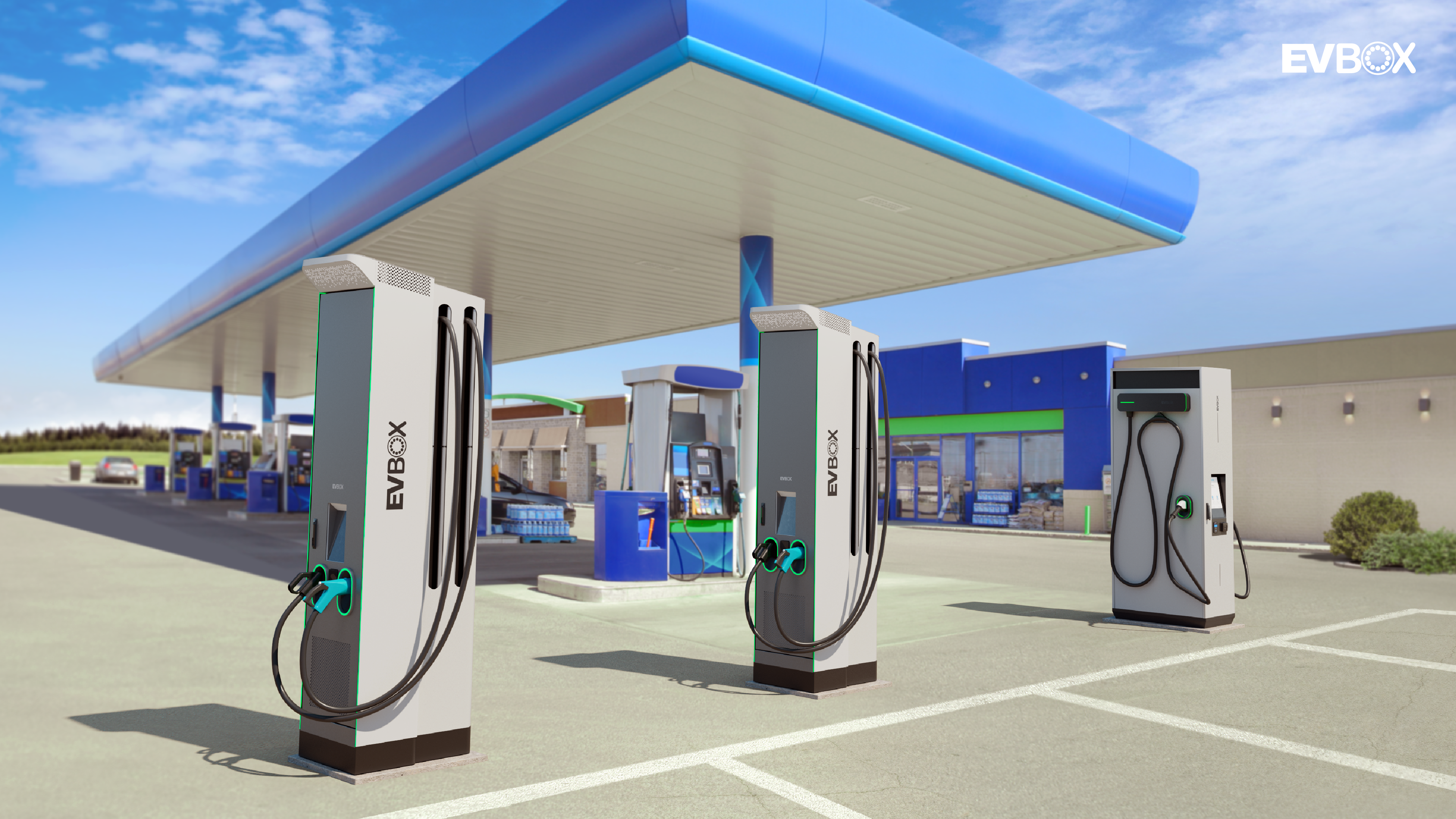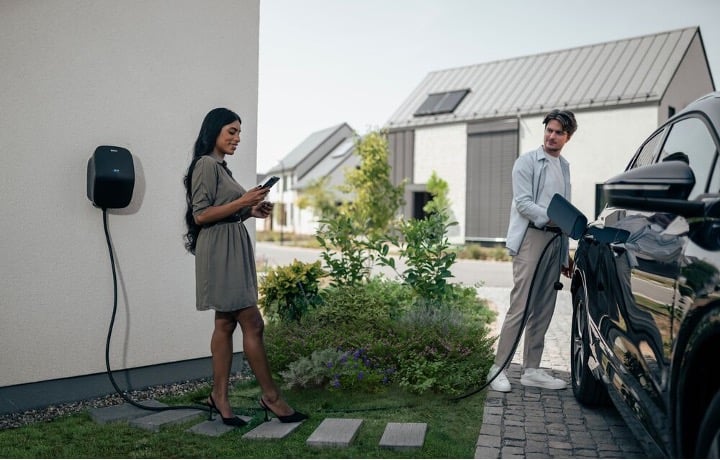
Last updated on July 19, 2022
Today, nearly half of all prospective new car buyers are thinking of going electric. Lower prices, wider model variety, and government support all provide fertile ground for the electric mobility market. But, as interest in electric vehicles skyrockets, 19 percent of potential EV drivers are still worried they will run out of charge on the road.
While this fear is totally understandable, it might also be comforting to know that 41 percent of current EV drivers encounter no problems at all when it comes to charging their car when they need to. Unlike petrol or diesel-powered vehicle drivers who can only fill up at gas stations, EV drivers have many more options for replenishing their rides. But where are the most common places to charge an electric car?
In this article, we’ll take a look at each of the five most popular places where EV drivers charge their electric cars and what’s in store for the future of EV charging infrastructure.
Where can I charge my electric car?
The answer to that question depends on a range of factors including what charging stations are available in your location and what you find convenient.
According to our Mobility Monitor report, where we interviewed hundreds of EV drivers (and potential EV drivers) across Europe, there are five places where they currently charge their electric vehicle or plug-in hybrid.
The vast majority (64 percent) of EV drivers responded that they currently charge their vehicles at home. The next most popular place where EV drivers currently charge is at work (34 percent), public parking lots (31 percent), gas stations (29 percent), supermarkets (26 percent) and at shopping malls and departments stores (22 percent).
Let’s take a look at each of the five most popular places where EV drivers currently charge their electric cars.

1. Electric car charging at home
As you can see in the table above, home charging is by far the most popular way to charge an electric vehicle. Today, 64 percent of EV drivers charge their EV at home, and as EVs become even more common around the world, PwC forecasts that this trend will continue.
So, why is home charging so popular? It comes down to two things: price and convenience. As you only pay for the electricity you consume based on your household’s electricity price, charging at home is nearly always the cheapest way to fill up your vehicle. Plus, instead of having to find a gas station, wait in the queue, fill up with gas, and pay inside the store, you can simply go about your day (or sleep the night away) and return to a fully charged vehicle.
Want to find out more about charging an EV at home? Check out our in-depth article to find answers to the most common questions about home charging. From how to charge an electric car at home, to potential charging speeds, costs, and best practices, you'll find everything you need to get started.

2. Charging electric cars at the workplace
While nothing beats the convenience of charging at home, workplace charging isn’t far behind. As revealed by our market research, 34 percent of EV drivers already charge their vehicles at work—and many more indicate they would like to if the option was available.
It’s encouraging to know many forward-thinking workplaces are already working to meet the evolving needs of their employees with EV charging. However, many employers still have some work to do. A further 27 percent of EV drivers indicate that they would like to charge at work, and 65 percent say there are not enough workplace charging options.
It goes without saying that employers that do provide EV charging offer their employees a highly convenient and sought-after amenity. What’s more, not all EV drivers have the luxury of charging at home, which makes workplace charging even more important.
Find out why EV charging is crucial for any workplace and how it can delight employees for years to come in our latest blog posts.

3. Charging electric cars at gas stations
Just behind workplace charging in terms of popularity is gas station charging. As per our research, 29 percent of European EV drivers charge their vehicles at gas stations regularly, plus a further one in five would love to do so should the option become available.
What makes gas station charging attractive is that many fuel retailers offer what’s known as DC fast charging. Also known as Level 3 charging, this is the fastest charging method available, replenishing a vehicle’s battery in just minutes as opposed to hours. While charging at home or at the office can take part of the day or overnight, some Level 3 chargers can have you back on the road in just 15 minutes (depending on your vehicle).
Find out more about the different charging levels here.

4. Retail and hospitality
In addition to homes, workplaces, and gas stations, EV drivers can now charge anywhere they go—think shopping centers, theaters, commercial parking lots, hotels, restaurants... the list goes on.
In fact, according to our research, 26 percent of EV drivers charge their car at supermarkets, while 22 percent enjoy charging their EV while shopping and dining out at shopping malls and departments stores. Just about any EV model can charge around 20-25 percent in an hour or two, so you can easily enjoy a meal or a shopping trip and get to your next appointment without ever worrying about an empty car battery.
With the internet in your pocket, it’s easy to find nearby hotels or restaurants that offer EV charging. Some establishments even provide EV charging for free as part of their loyalty and rewards programs. Have a look at what’s in your local area—you might be surprised what you find.
.png?width=1595&name=image%20public%20(new).png)
5. Public charging
According to our research, 31 percent of EV drivers in Europe use public chargers regularly. Not only do they help meet the growing number of EVs on the road, but some also offer fast charging which can reduce charging times, allowing more cars to recharge.
Public charging is critical for the uptake of electric mobility. As such, one of the biggest challenges cities and governments currently face is keeping up with the growth of the number of EVs on the road. To prepare the streets for tomorrow’s electrified transport system, ensuring there are enough charging stations available for all EVs is crucial.
That’s why in 2014, an EU-appointed commission dictated that there should be a maximum of 10 EVs per Public Charging Point (PCP) across Europe to ensure enough room for everyone to charge when needed. The 2021 ratio is approximately 7.5 EVs per PCP, so while most countries have enough EV charging stations today, we’ll need a lot more to meet the ever-growing demand in the not-too-distant future.
For your reference, the International Energy Agency (IEA) predicts that by the end of the decade, there could be as many as 145 million EVs on the world’s roads—meaning that you’re likely to see many more public EV charging stations on the road.
If you’re wondering where you can find public charging stations in your area, you can use one of the many specialized EV charging maps online or simply search for “Public charging stations near me” in Google to find an overview of your options.
EV charging infrastructure forecast
Many countries have acknowledged the need to advance electric mobility to reduce rising CO2 emissions. Currently, Europe, the US, and China have already taken major steps to establish and expand their charging networks.
As governments around the world boost funding to accelerate EV adoption, demand for charging infrastructure is forecast to increase. In fact, between 2020 and 2026, the global EV charging infrastructure market is expected to grow at a CAGR of over 30 percent.
Installing charging stations at homes, on the roads, and at all types of businesses is key to establishing infrastructure that can support the growing adoption of EVs. To find out what EV charging incentives you or your business can take advantage of in Europe, take a look at our up-to-date overview.
Electric mobility is becoming the new standard, and suitable charging infrastructure is needed to keep up with the increasing demand. EV driving will not only change the way we commute but will allow us to decide how and where we choose to “refuel” our batteries.
Discover more about EV charging
A lot of new electric drivers are baffled by the experience of driving electric and charging their vehicle up while it’s parked. The diverse locations to charge is –of course– one of them, but what about the EV battery? How far can you get on one charge? How much does it cost to charge? How much time does it take, and what is the difference between different charging levels? Read all about these things and more in our in-depth EV charging guide.
Related articles

Smart Charging for Solar EV Systems: What is possible today?
There are a variety of smart solutions available, capable of optimizing your solar EV charging system in different...

Can solar EV charging save you money?
Charging your EV using household solar panels can indeed save you money on your utility bills. How much money solar EV...

How to optimize your solar set-up for charging electric cars at home
There are several ways EV drivers can optimize a homegrown solar system to ensure their EV recharging needs are met....